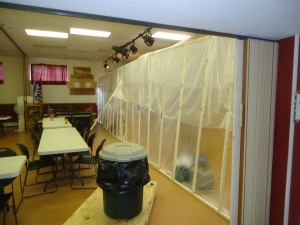Independent Restoration Companies vs. Insurance Company Vendors – who To Use After a Loss ?
The first action after an emergency any homeowner should take is to contact a restoration company. The next would be to contact your insurance carrier. Contrary to popular belief, mitigating the loss whether it is fire, flood or sewer back up, it is the sole responsibility of the insured. The insured and the restoration company are the first line of defense in preventing further damage from occurring. It is very common for the insurance company to deny coverage due to inaction by the homeowner.
 Your home is like any investment; it must be safeguarded and protected. Insurance companies often create vendor list to help them mitigate such loses. It serves the carriers well to have one of “their” people come out and minimize the amount of damage sustained and the cost of repairs to the carrier. In these cases, often times it is the insured that is left holding the short end of the stick. Insurance adjusters work for the carriers and their job constitutes on minimizing the mitigation cost and repair bills.
Your home is like any investment; it must be safeguarded and protected. Insurance companies often create vendor list to help them mitigate such loses. It serves the carriers well to have one of “their” people come out and minimize the amount of damage sustained and the cost of repairs to the carrier. In these cases, often times it is the insured that is left holding the short end of the stick. Insurance adjusters work for the carriers and their job constitutes on minimizing the mitigation cost and repair bills.
At Enviral Restoration Fire and Water Corporation, we believe that after paying insurance premiums for years and some cases decades, the homeowner should expect and receive top quality work, without compromise.
In the recent past, restoration and repair contractors wrote detailed proposals. The insurance adjusters would meet with said contractors at the loss site and hammer out a repair scope which was typically just and fair. Using the contractor’s field knowledge, they were able to restore the property to a pre loss condition. Over time and many losses, it became clear as to what standards were needed to be met by the adjuster in order to assure a quality product.
This arrangement was superseded by insurers who also required the adjuster to write an estimate, a task easily accomplished by rewriting the contractor’s original estimate. Soon after, programs like Xactimate arrived and one would think that these programs would facilitate relationship between a contractor and the adjuster. As adjusters became more adept and expected to write restoration estimates, the differences between the experienced contractor and the theoretical knowledge of damage repair became a frustrating experience for both the contractor and the insured. As many contractors can tell you, insurance company estimates tend to be very conservative and lack attention to detail.
This raises an important distinction between those who only write estimates and those who actually perform them. Contractor’s estimates are tested by actual results and job costs. Many contractors will opt out of a process that puts their standards in a continuing conflict with an insurance carrier’s estimate. Let’s face it, in order for a company to survive, it must report profit and insurance adjusters don’t have to worry about profits. Often times adjuster’s estimates reflect a theoretical knowledge of damage repair as expressed by the estimating program used in his company. Whether a job is profitable, is often overlooked or disregarded by the carrier. These insurance companies understand that for those who choose to follow their short sighted evaluation, they still have an avenue available to “make it work”. At this point, profit can be derived from short cutting the work scope and sacrificing the quality of the finished product, all at the expense of the claimant.
